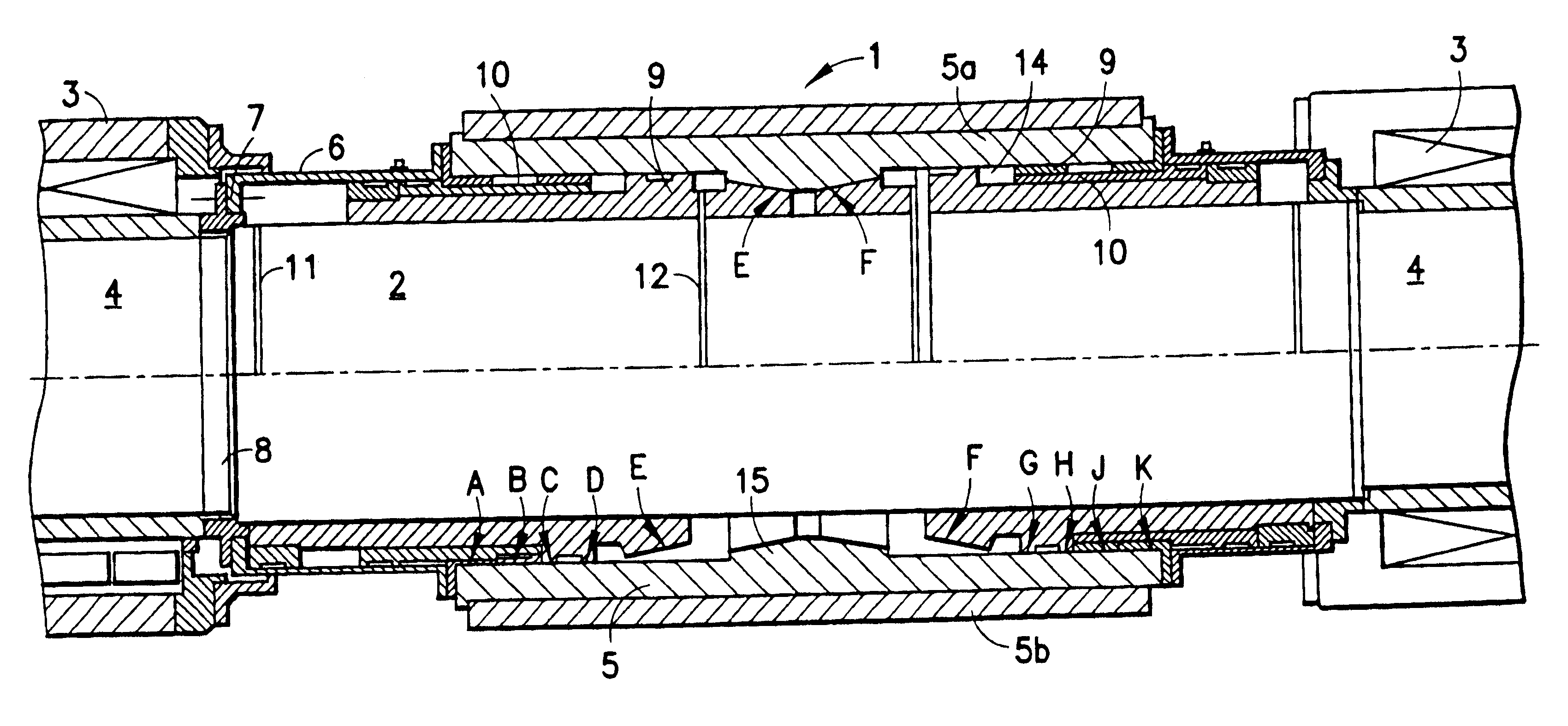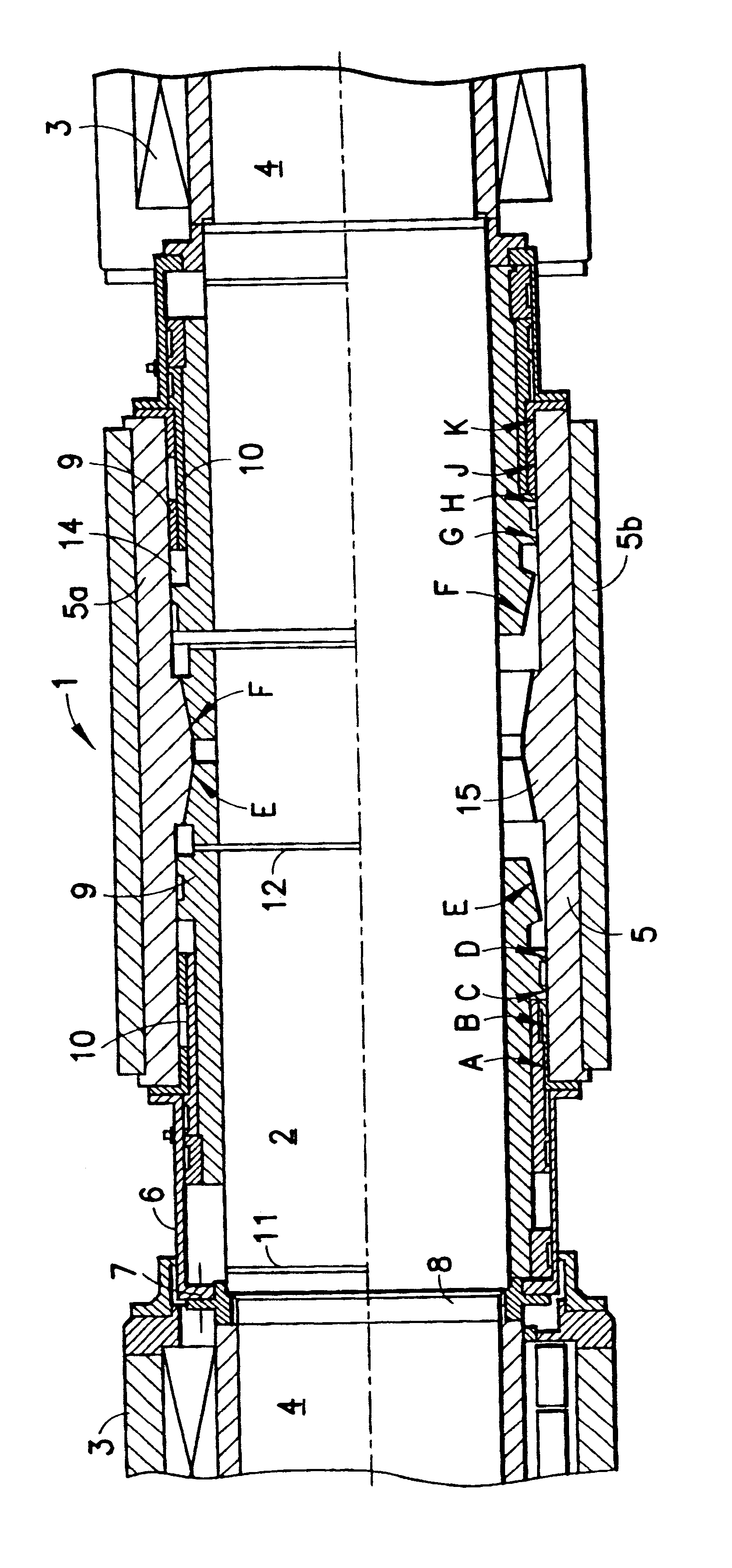Back-up or intermediate roller for producing a flat rolled product in a rolling mill
- Summary
- Abstract
- Description
- Claims
- Application Information
AI Technical Summary
Benefits of technology
Problems solved by technology
Method used
Image
Examples
Embodiment Construction
.
In the single figure of the drawing, 1 designates a supporting roll according to the invention, which comprises the roll core 2, the roll journals 4, which are mounted in indicated cylinder roller bearings 3, and the roll sleeve 5, which is connected in a rotationally fixed manner to the roll core 2. The sheath. 6 ensures that the roll sleeve 5 is carried along with the roll core 2, said sheath 6 engaging at 7 in a roll-journal toothing formation indicated at 8. In the example illustrated, the supporting roll 1 is provided with a two-part roll sleeve 5, which is made up of the basic part 5a and the exchangeable wear part 5b. Of course, it is also possible for the roll sleeve to be in one piece. Between the roll sleeve, which is designated 5 hereinbelow in order to simplify matters, and the roll core 2 are the annular pistons 9, and further annular pistons 10 arranged thereon. The two pistons 9, 10 are arranged such that they can be displaced axially independently of one another, it...
PUM
| Property | Measurement | Unit |
|---|---|---|
| Angle | aaaaa | aaaaa |
| Length | aaaaa | aaaaa |
| Displacement | aaaaa | aaaaa |
Abstract
Description
Claims
Application Information
 Login to View More
Login to View More - R&D
- Intellectual Property
- Life Sciences
- Materials
- Tech Scout
- Unparalleled Data Quality
- Higher Quality Content
- 60% Fewer Hallucinations
Browse by: Latest US Patents, China's latest patents, Technical Efficacy Thesaurus, Application Domain, Technology Topic, Popular Technical Reports.
© 2025 PatSnap. All rights reserved.Legal|Privacy policy|Modern Slavery Act Transparency Statement|Sitemap|About US| Contact US: help@patsnap.com


